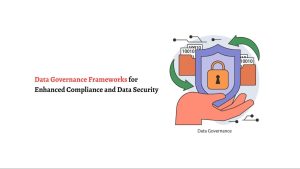Windows 10 & 11: Secure Your Files

The masses have spoken. Indeed, the masses have spoken, Windows 11 and its respective close relative and extremely popular Windows 10 and previous versions, dominate device use globally with a reported close to 1.5 billion devices.
With the iconic Bill Gates steering a big part of the home computing revolution alongside other legends such as Apple’s Steve Jobs, the Windows operating system recently celebrated its 36th birthday on Saturday, Nov 20th, 2021.
Windows, is one truly intergenerational home and mobile computing experience. Children, in some ways, can relate to their parents’ and even grandparents’ computer use and engage in fun story exchanges.
With the most current and widely used versions of Windows maintaining their popularity globally, users should not lose sight of the growing list of internet risks in general and specifically within the Windows operating system.
Let’s further explore some areas generally relating to internet security, focusing on the Windows operating system and the various ways of securing your Windows files.
Internet & Windows Security
Internet and Windows-related security topics are very closely related, with proactive real-time anti virus and anti malware solutions being a big part of the picture, including windows folder and file-level permissions, network shares, web browser protection, intrusion protection, and much more.
Internet security is also known as Cybersecurity, and there is a plethora of information even for beginners.
In general, the most prudent and wise first step is to download a free trial of a comprehensive anti-malware solution with web protection from a reputable and well-established internet security company. Once you are familiar with the solution and gain its confidence firsthand, the next step should be to purchase the full version to ensure uninterrupted real-time cybersecurity protection.
File, Folder & Share Permissions
From the early days of the LAN or Local Area Network, Windows folder sharing became very common and widely used, including families sharing the same PC or laptop simply by each using a unique Windows account. Consequently, for the last few decades, Microsoft has taken user file security and privacy with the utmost importance. Microsoft has provided everyday users with a user-friendly way to protect their files and folders with Windows file and folder level permissions.
Protecting Documents & Workbooks in Windows
Many Windows users have gotten accustomed to using Office applications such as Microsoft Word and Microsoft Excel. Using such applications has been synonymous with the overall operating system ‘productivity’ experience.
An Excel Workbook may have many sheets associated with it and often contains sensitive private information such as financial data.
A Word Document may also contain private information such as an unpublished book, patent data, secret recipes, and business plans.
Regardless of how sensitive or not sensitive a workbook or document may be, by using the Protect Workbook and Protect Document with the Encrypt with Password option within the feature in the info section of the application, cyber prying eyes cannot view the file’s contents even if access to the file is gained.
These essential security and privacy features provide an additional layer of security in cases where these very private files get in the hands of an internet thief or spy or simply an unauthorized person.






